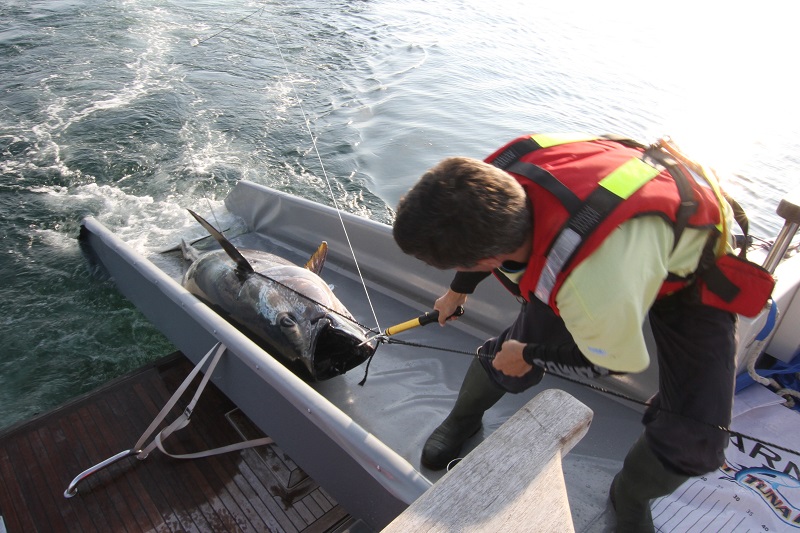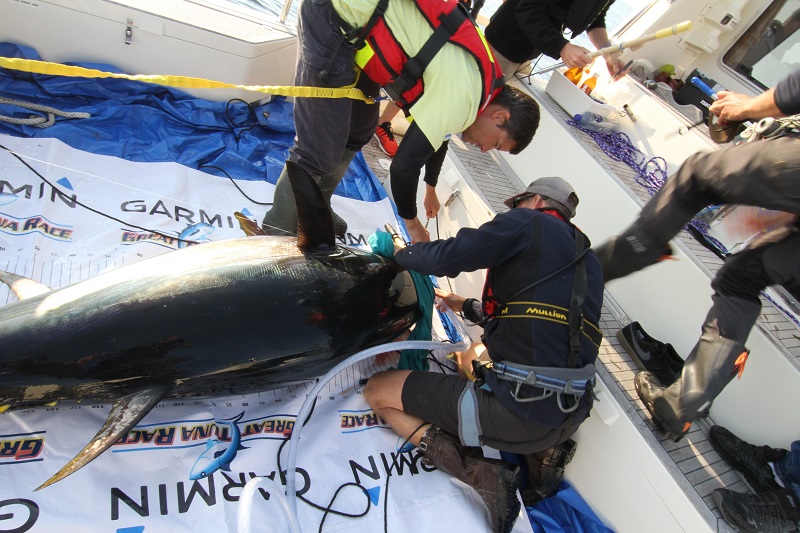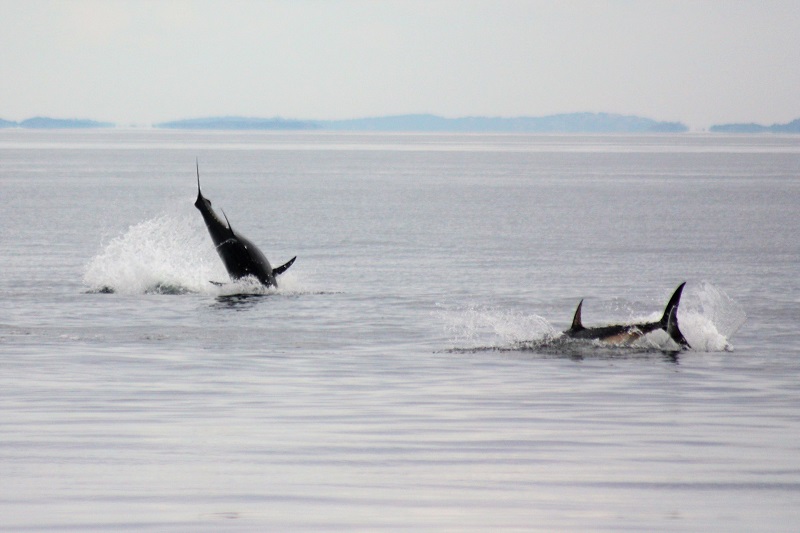Also this year bluefin tuna were tagged in September by Danish and Swedish anglers in collaboration with scientists and experts. The tags and the related data will be used to gather more knowledge on this iconic fish that only recently came back to the Northeast Atlantic waters.
In 2017, 18 tuna were tagged with satellite transmitters in order to obtain more information about the migratory pattern of the species in Nordic waters. Following the successful experience of 2017, two new projects were carried out in Denmark and Sweden this September. The tagging projects took place in southern Skagerrak, in good collaboration between the two countries. More than 80 angling crews provided their experience, boats and gear in a unique collaboration with Danish and Swedish scientific institutions DTU Aqua and SLU Aqua.
A very successful project and a very good example of collaboration between science and the angling community, says Markus Lundgren, project leader for the Swedish Anglers Association.

Information from the 2017 study highlighted that the migration habits can vary significantly between different fish and so it was deemed necessary to repeat the exercise to collect more data from individual fish. Moreover, genetic samples were collected from the fish to identify if they belong to the stock which spawns in the Mediterranean or the one which spawns in the Gulf of Mexico.
This year, more than 30 fish were tagged in total. The fishing was performed with rod and hook, which is considered to be the best method for tag and release of these large individuals. The tags were applied by a tagging expert following the method recommended by the International Commission for the Conservation of Atlantic Tunas (ICCAT). Also, two different kinds of tags were used. The first one is an acoustic transmitter that actively transmits signals to an underwater hydrophone. The other tag is logging different data over time. The tag is then released from the fish after a certain amount of time, generally one year, and sends the collected data directly via satellite to a database. ICCAT can then use the data for the assessment of the stocks.

The hope is that, by collecting more data regarding the movements of the tuna and their presence in the Atlantic, it will be possible to further improve the management of the species, which was severely overfished in the past, and thus rebuild a strong tuna stock in European waters.

Photos courtesy of Markus Lundgren, Sportfiskarna